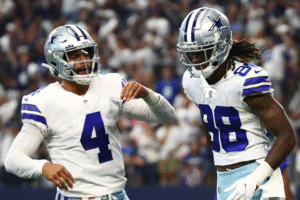
Once upon a time, the NBA’s best players used to move through free agency. Think about how many offseasons in the 2010s were dominated by where LeBron James or Kevin Durant would sign. Those days are over. No reigning All-NBA player has changed teams through free agency since 2019, when Durant, Kawhi Leonard and Kemba Walker all did so.
So, what happened? A few things. Less than a year after that wild 2019 offseason, COVID happened. That effectively froze the cap for three years, and it created an environment in which many of the best players were afraid of going into free agency. They started signing extensions then. It took teams a little while to catch on to what was happening, but an inflection point came in 2021. Several teams spent years preserving cap space expecting Giannis Antetokounmpo to become a free agent that summer. Well, Antetokounmpo re-signed in Milwaukee, and no true stars became available. Suddenly, half of the league was bidding for Kyle Lowry, and teams recognized that cap space wasn’t as valuable anymore.
This created a bit of a feedback loop. Teams started saving less cap space because the free agents weren’t worth it, so players started extending more frequently because there was less cap space for them to sign into, which weakened the free agency pool further, which disincentivized preserving cap space, and so on. We’re about to go into a 2025 offseason in which only the Nets have significant cap space. The new model is for players to sign extensions so long as they can come anywhere close to fair market value. Then, if they want to move later, they just force a trade.
So, sure, we could preview free agency (and we have!), but the talent pool is pretty limited outside of role players. No, the real contract questions that need to be answered this offseason revolve around extensions. While supermax and rookie extensions are governed by their own sets of rules, the majority of players who are up for extensions this offseason will be governed by the standard veteran exception rules. So what are those rules?
A…..






